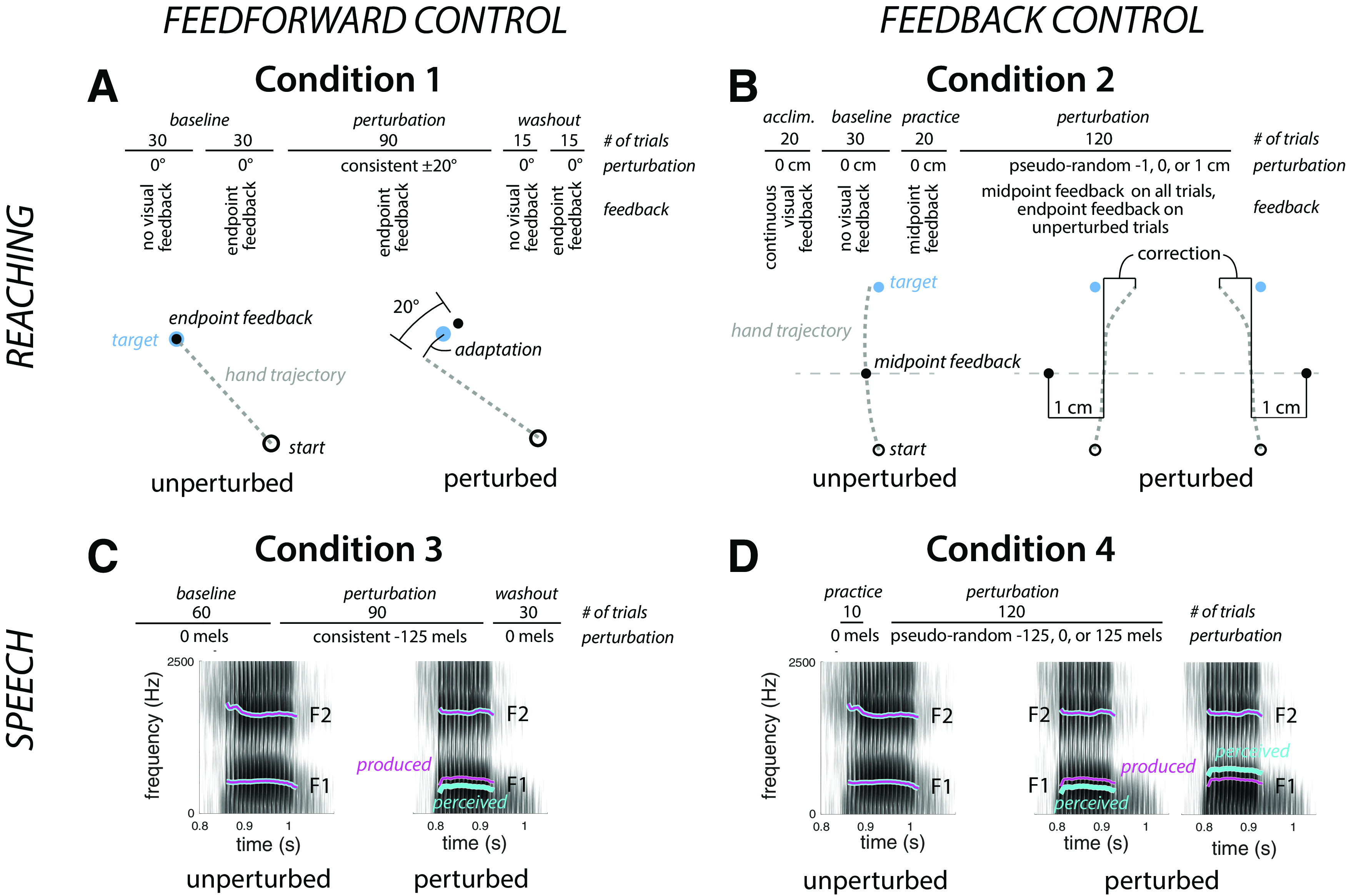Figure 1.

Experimental design. A–D, Top, shows the structure of the experimental session, and bottom, the perturbation. A, Condition 1, feedforward control in reaching, Participants made 8 cm center-out reaches to targets (blue dot) with endpoint feedback. During the perturbation phase, the location of the feedback cursor was rotated by 20° from actual hand position (direction cross-balanced across participants). The dashed line represents the unseen hand movement. B, Condition 2, feedback control in reaching. Participants made 16 cm reaches to a target (blue dot). During the perturbation phase, visual feedback about hand position (black dot) was given at reach midpoint with the feedback shifted by −1, 0, or 1 cm, with the shift on each trial determined in a pseudorandom manner. The thin gray line depicts the location of reach midpoint but was not visible to the participant. C, Condition 3, feedforward control in speech. Participants spoke a single word on each trial, hearing playback of their speech over headphones with minimal delay. During the perturbation phase, feedback of the first formant during the vocalic portion of the utterance was perturbed by imposition of a −125 mel shift (cyan trace superimposed on the spectrogram). D, Condition 4, feedback control in speech. Participants spoke a single word on each trial. During the perturbation phase, auditory perturbations (cyan trace) of −125, 0, or 125 mels were pseudorandomly applied to the first formant during the vocalic portion of the utterance.
